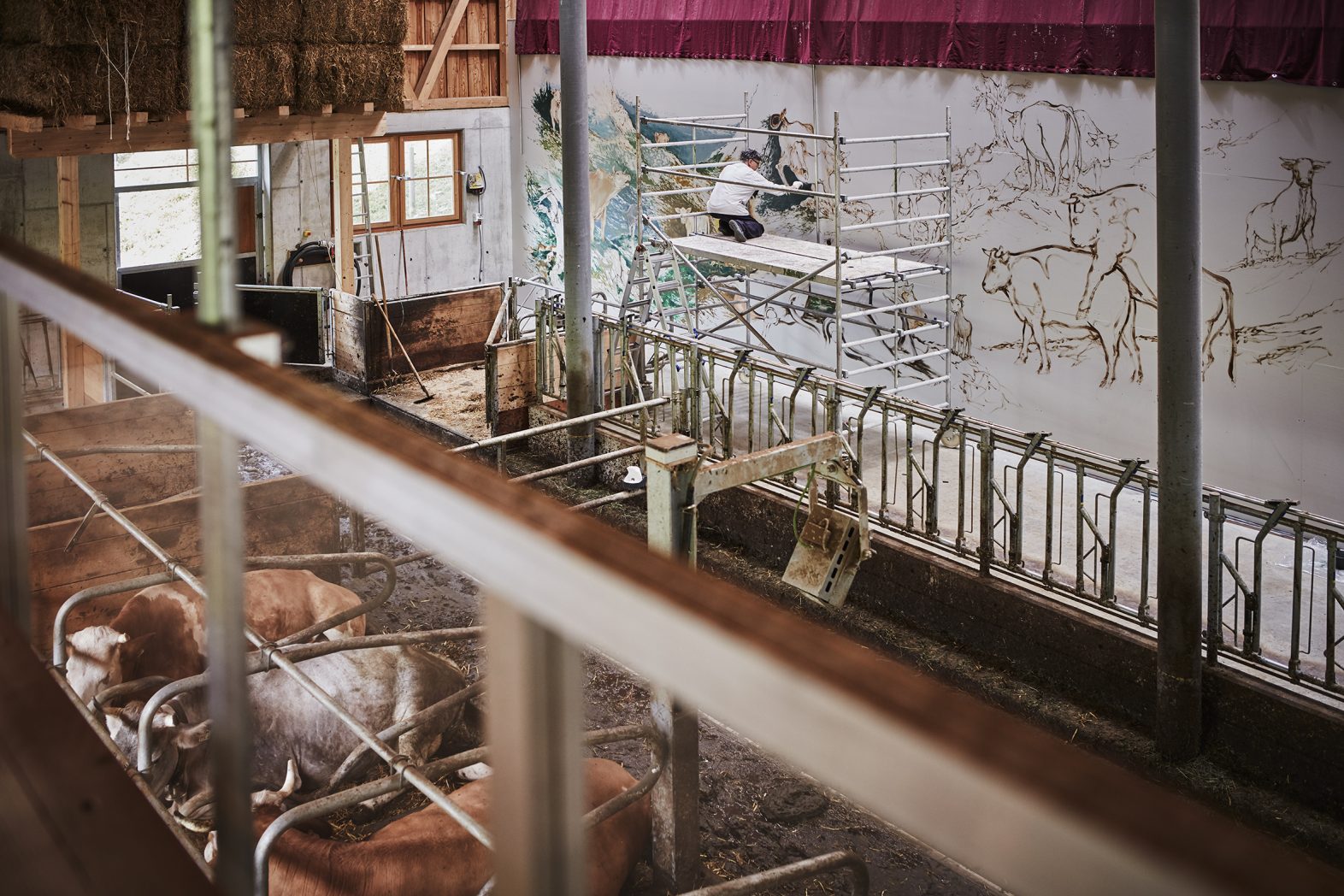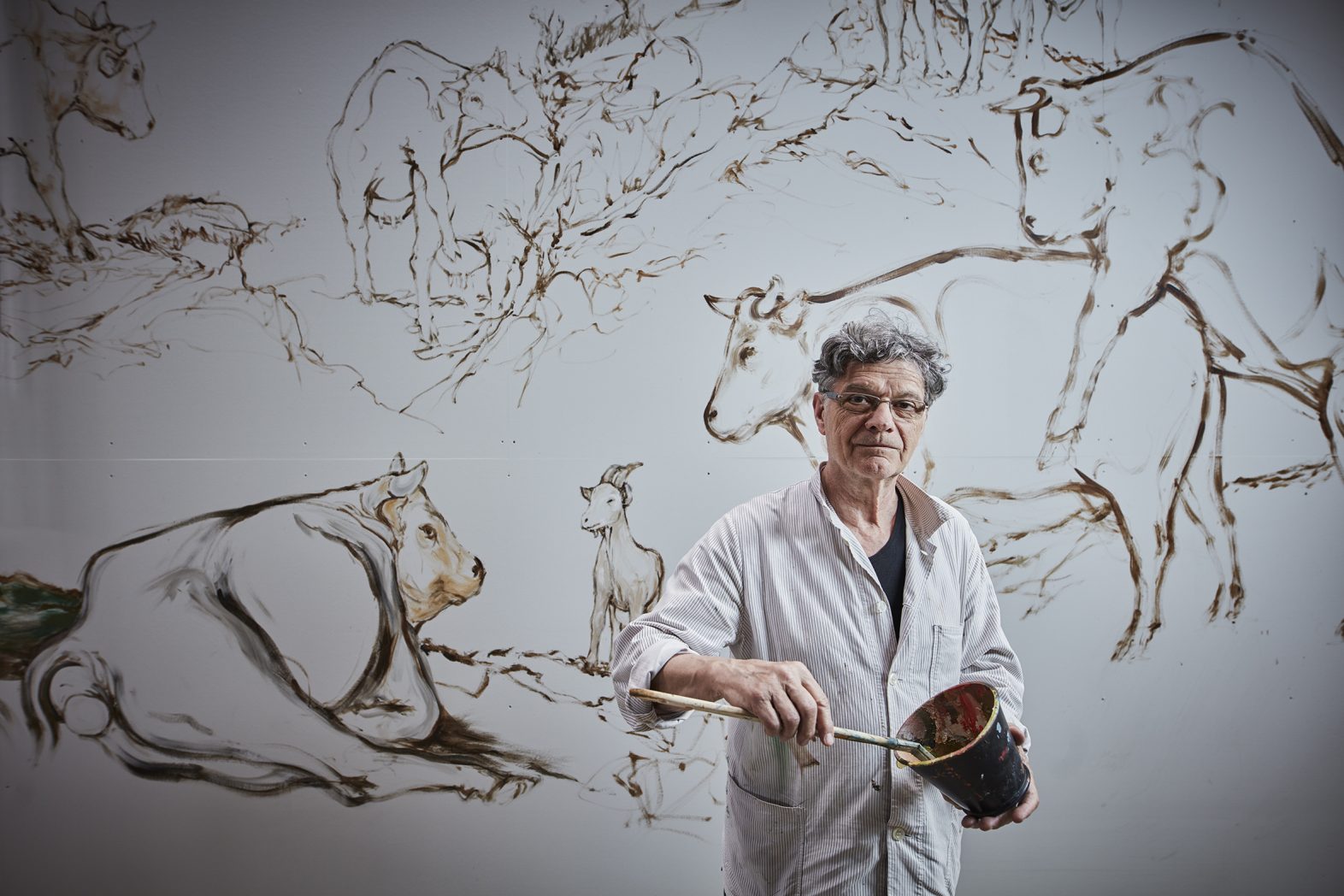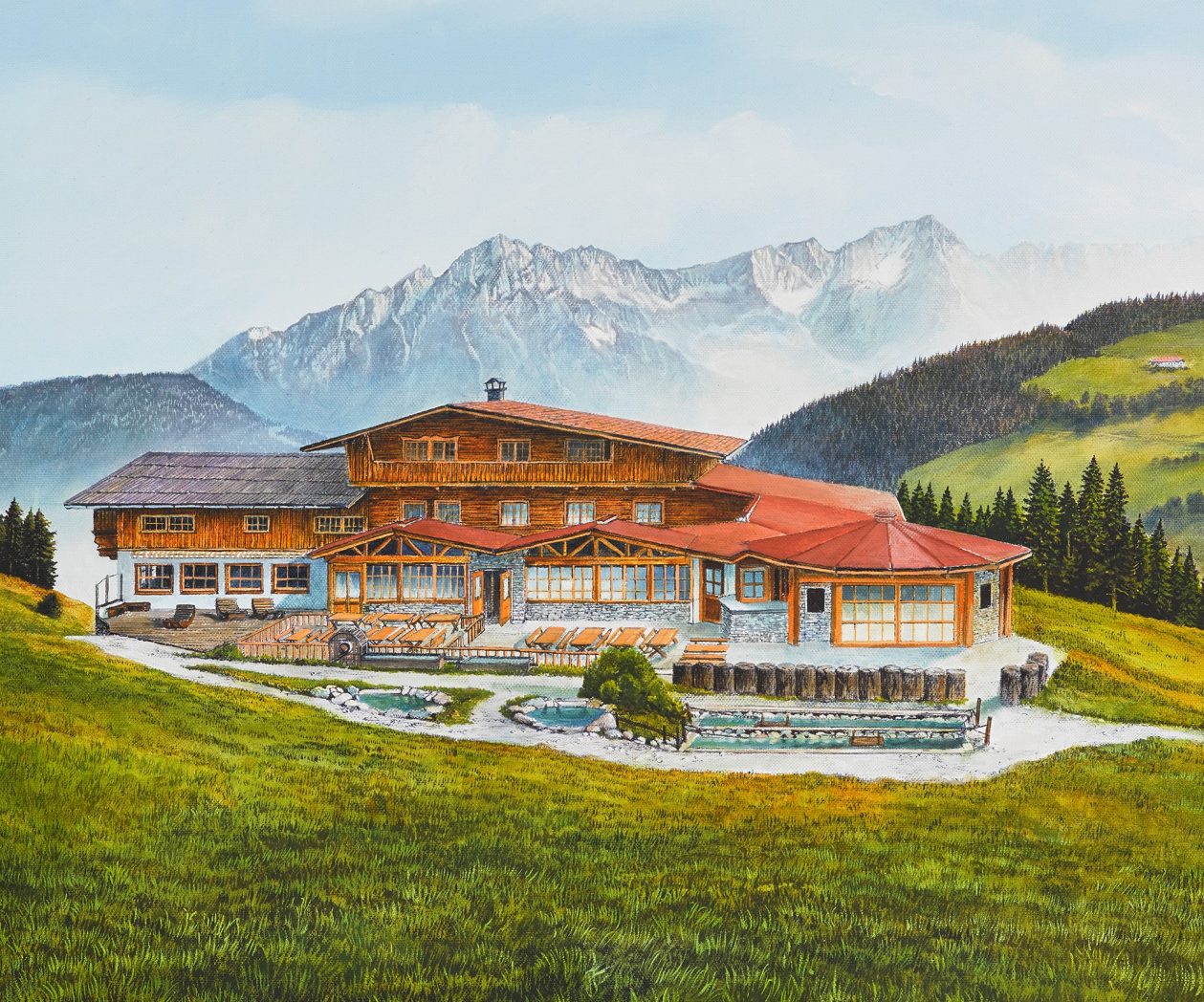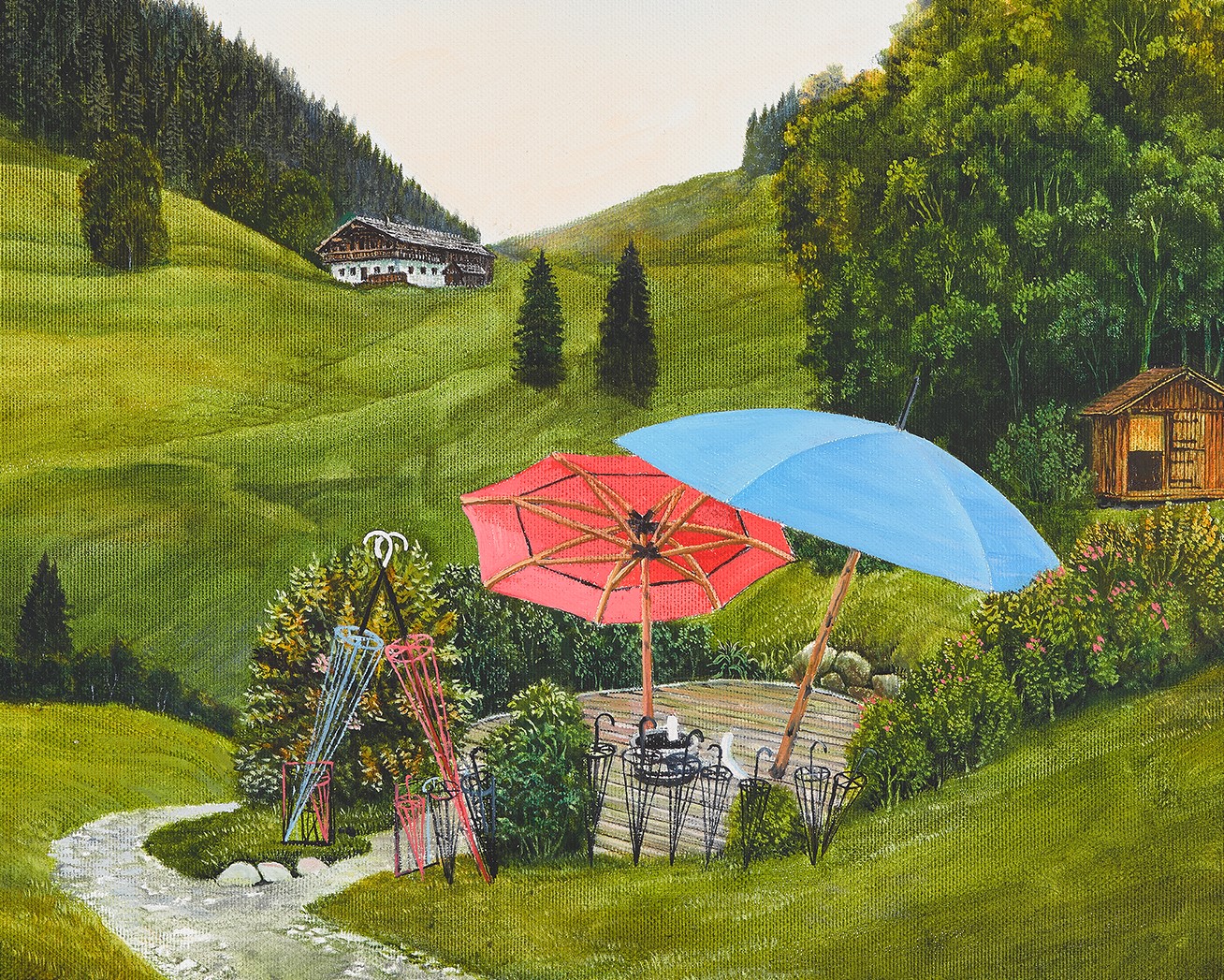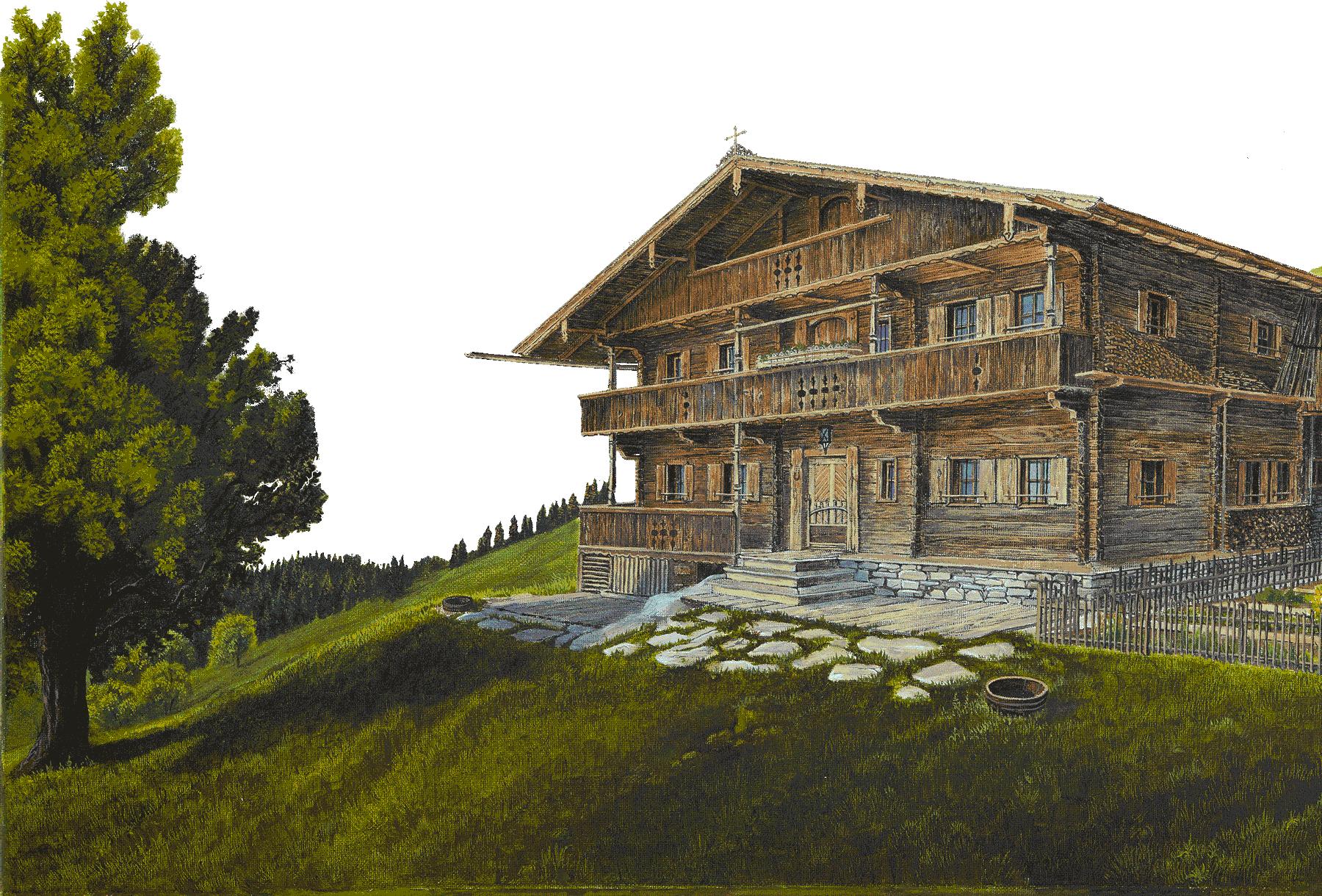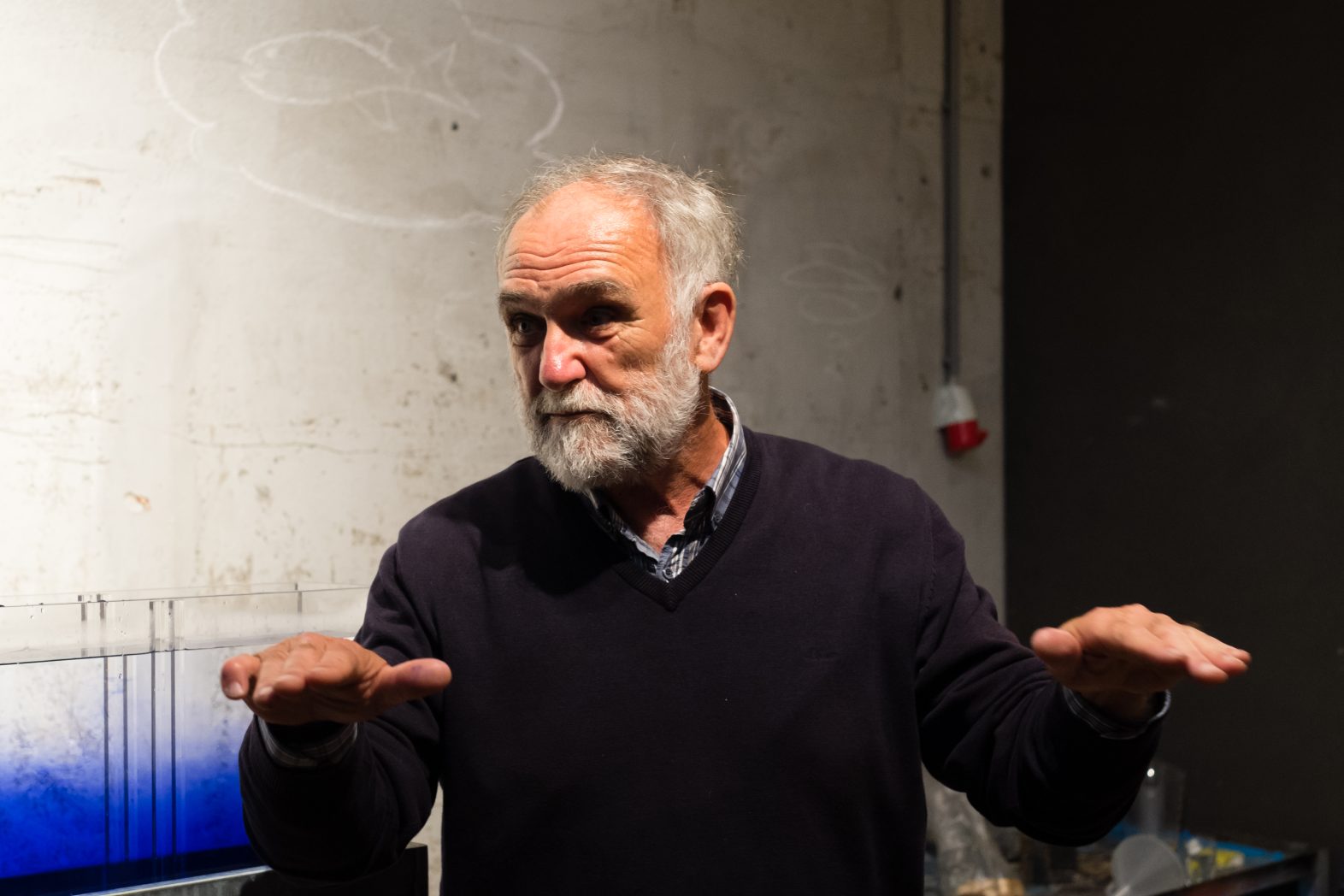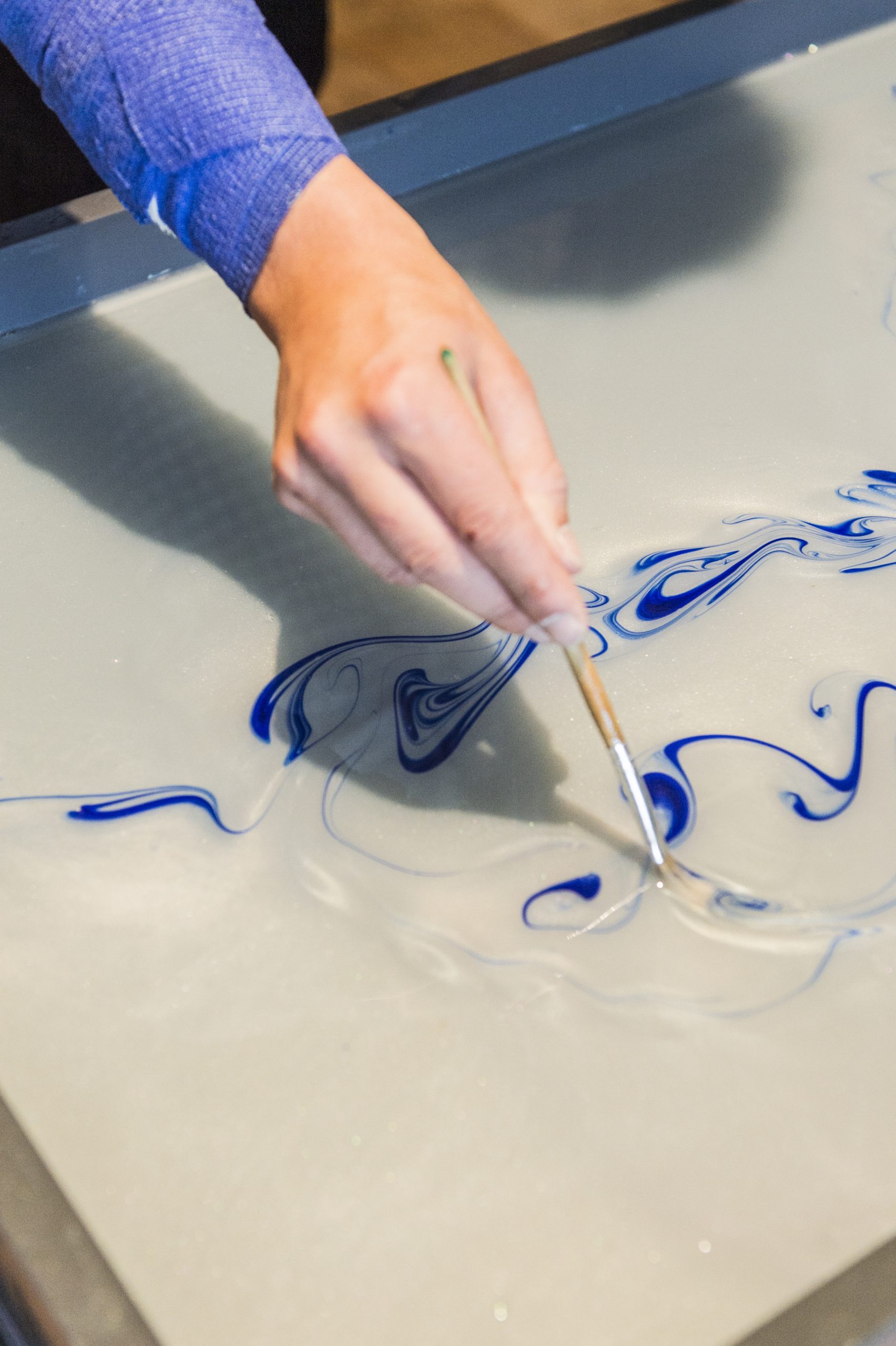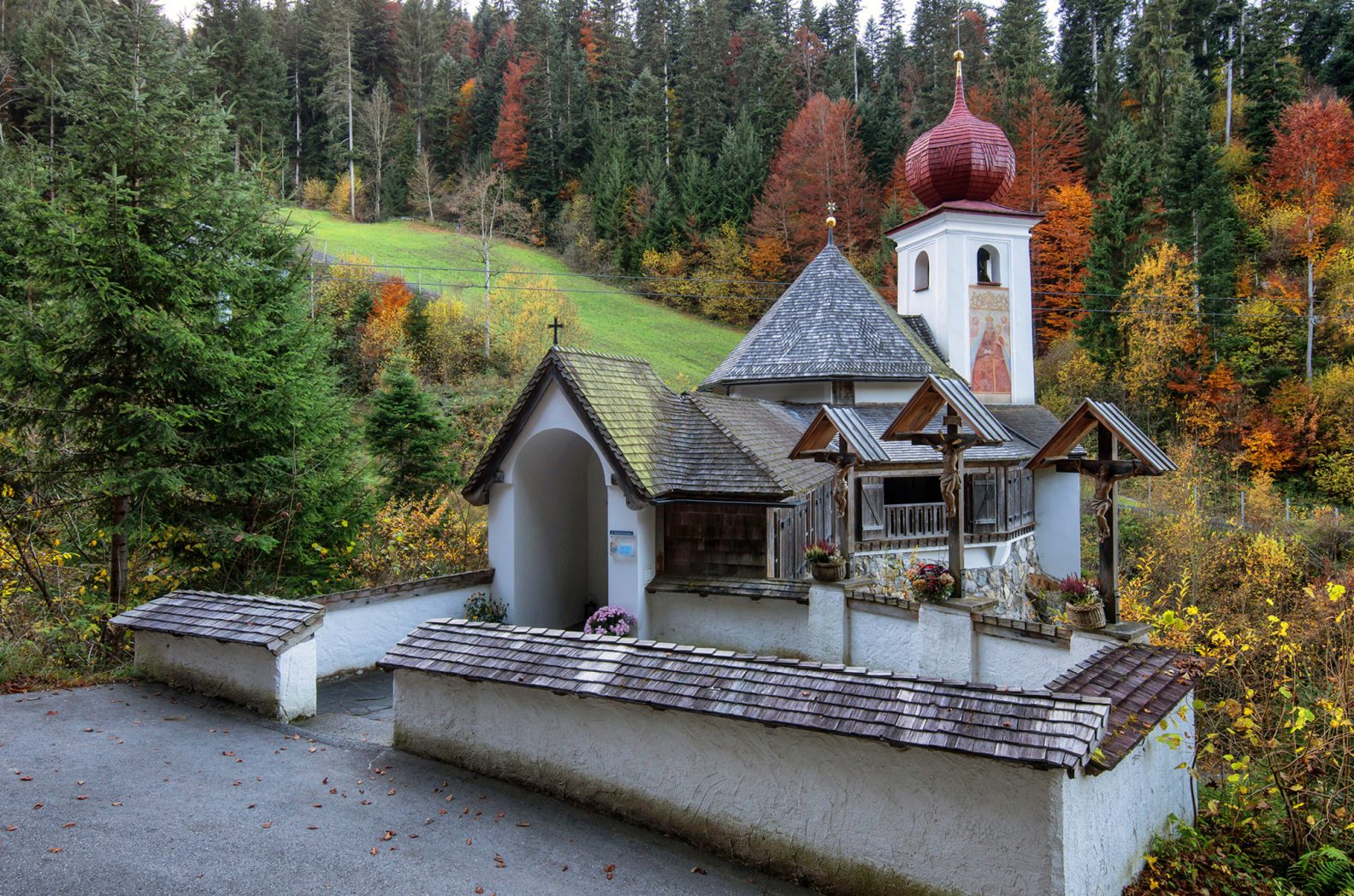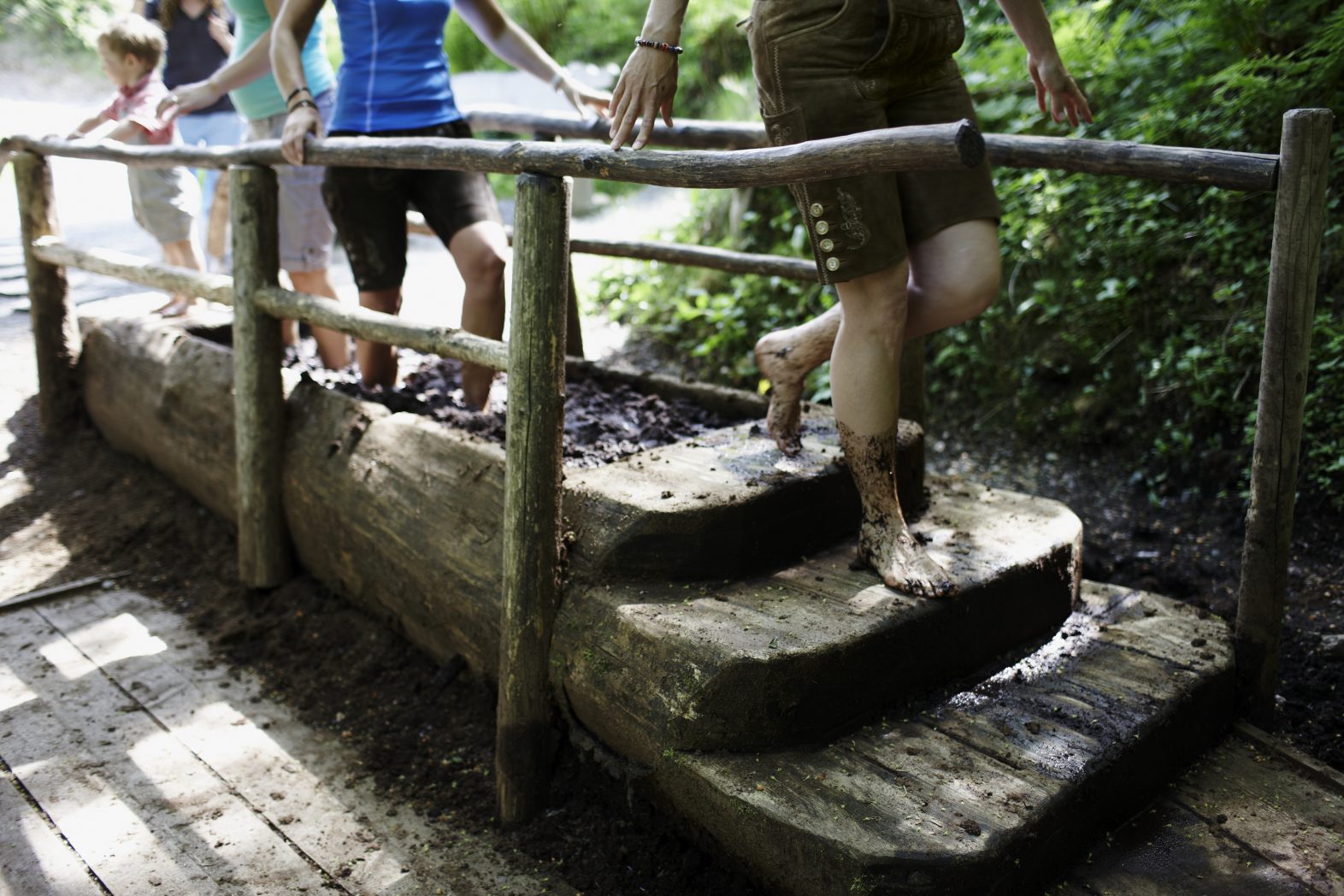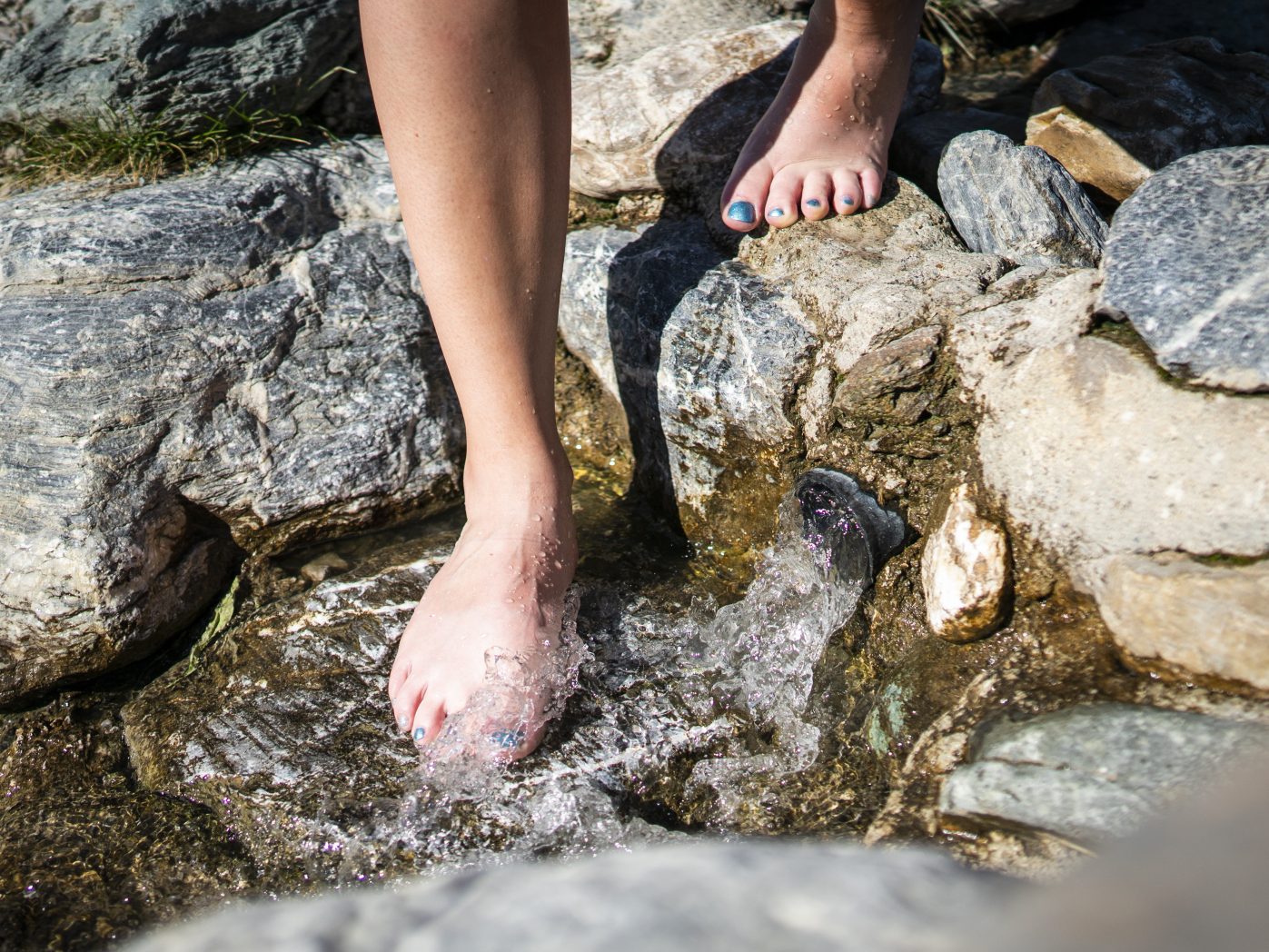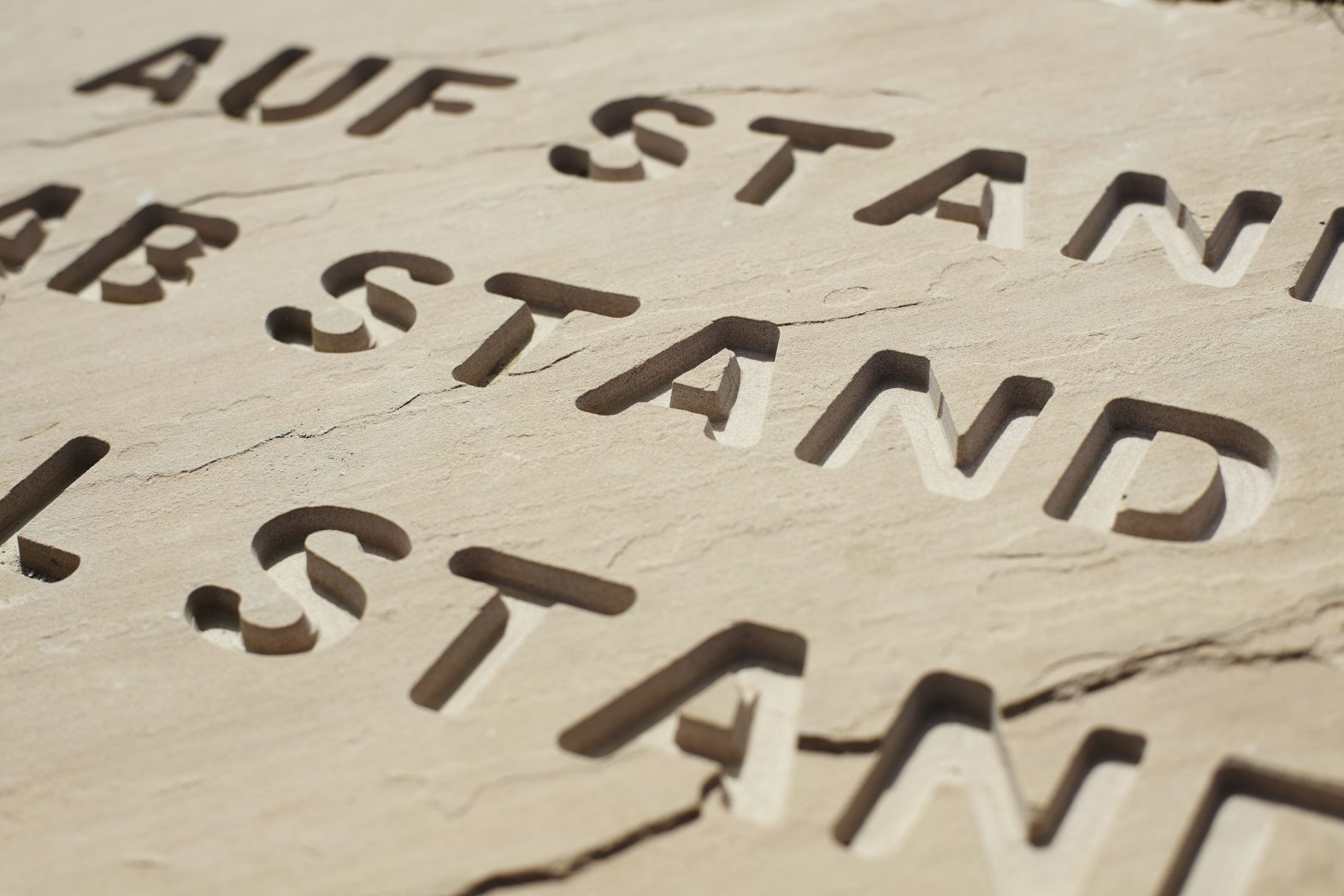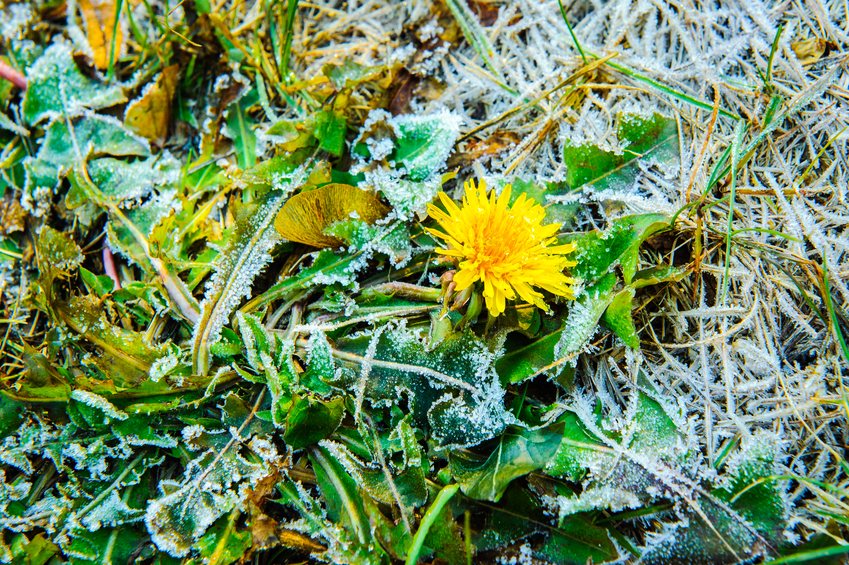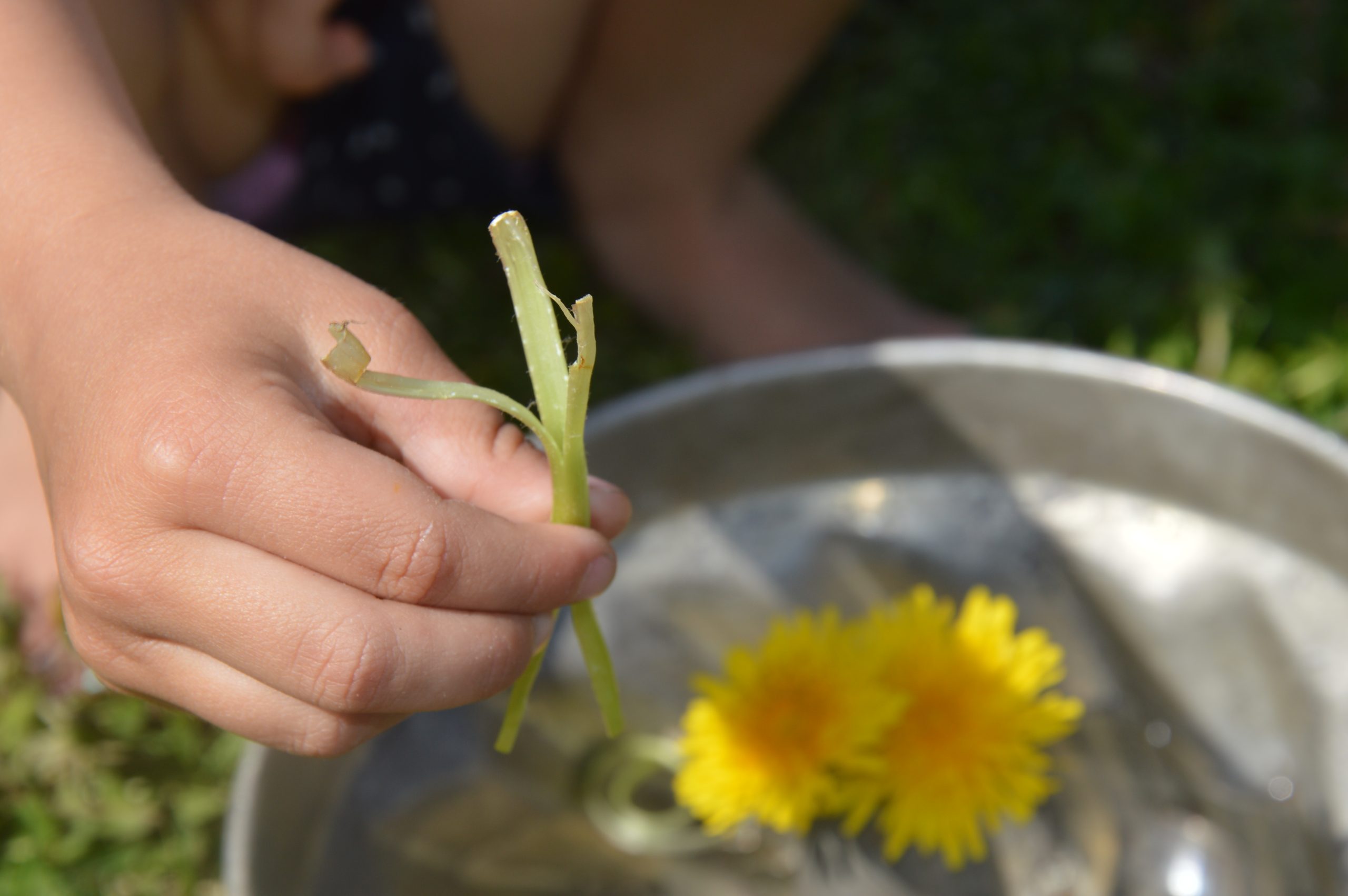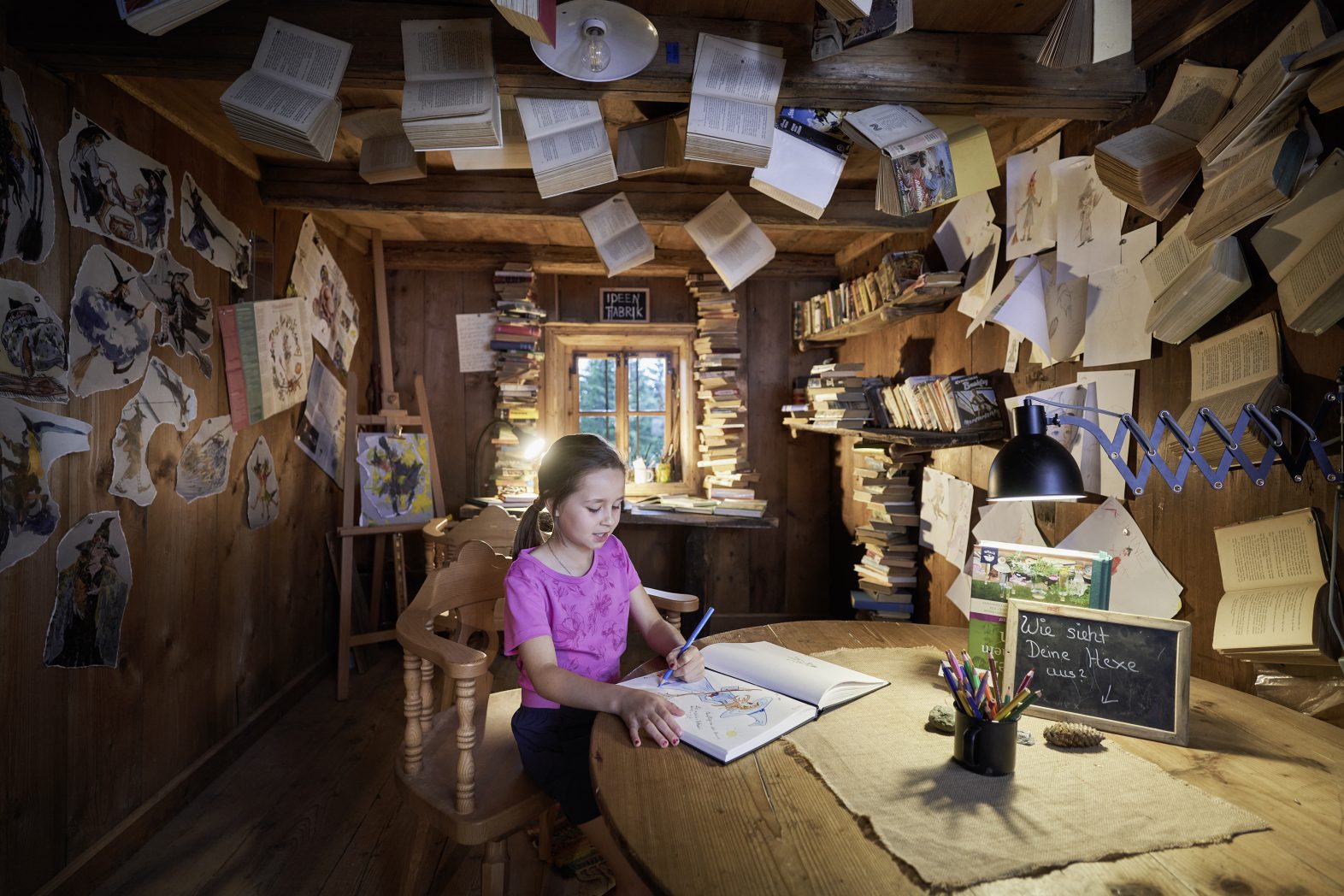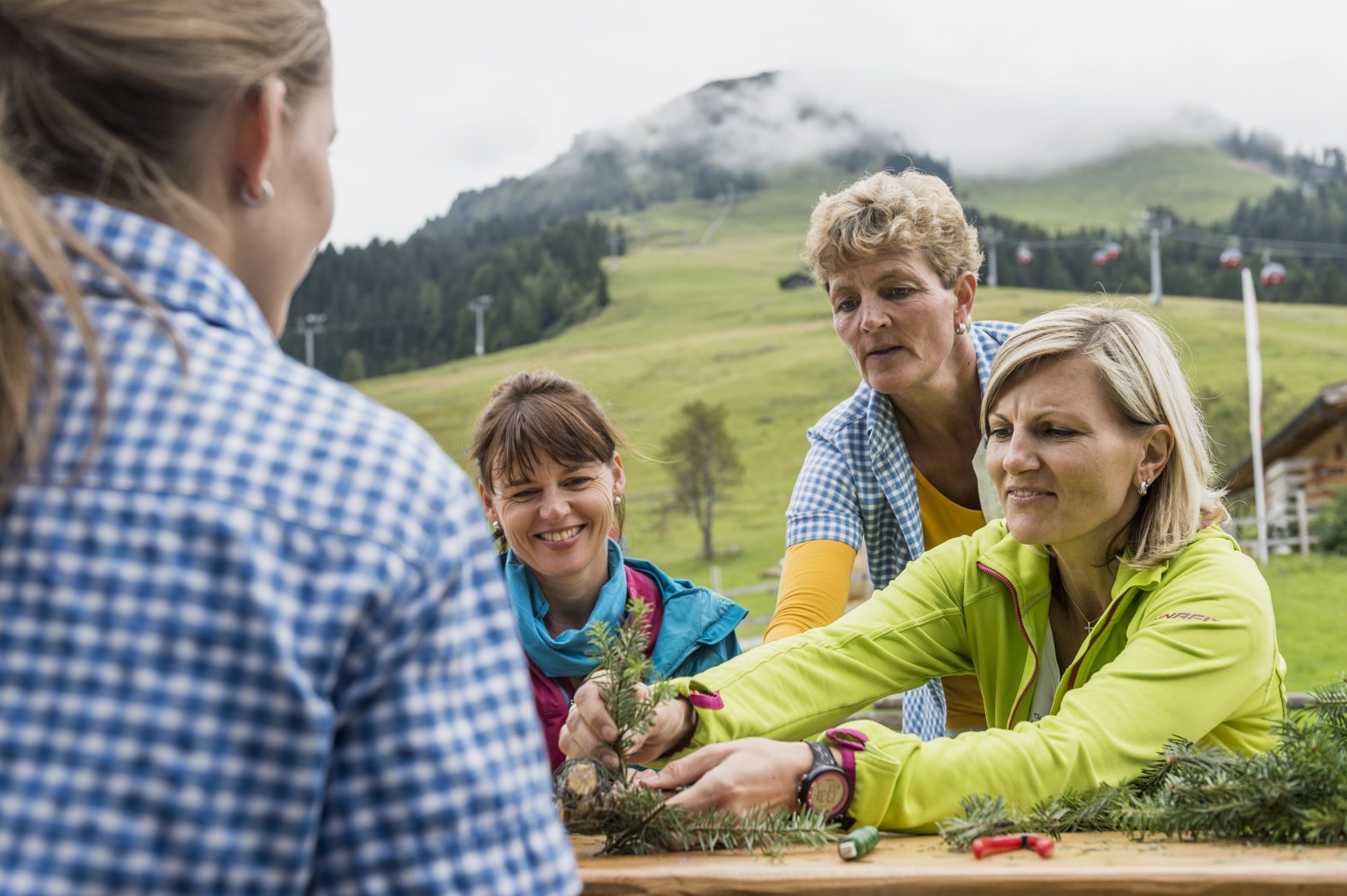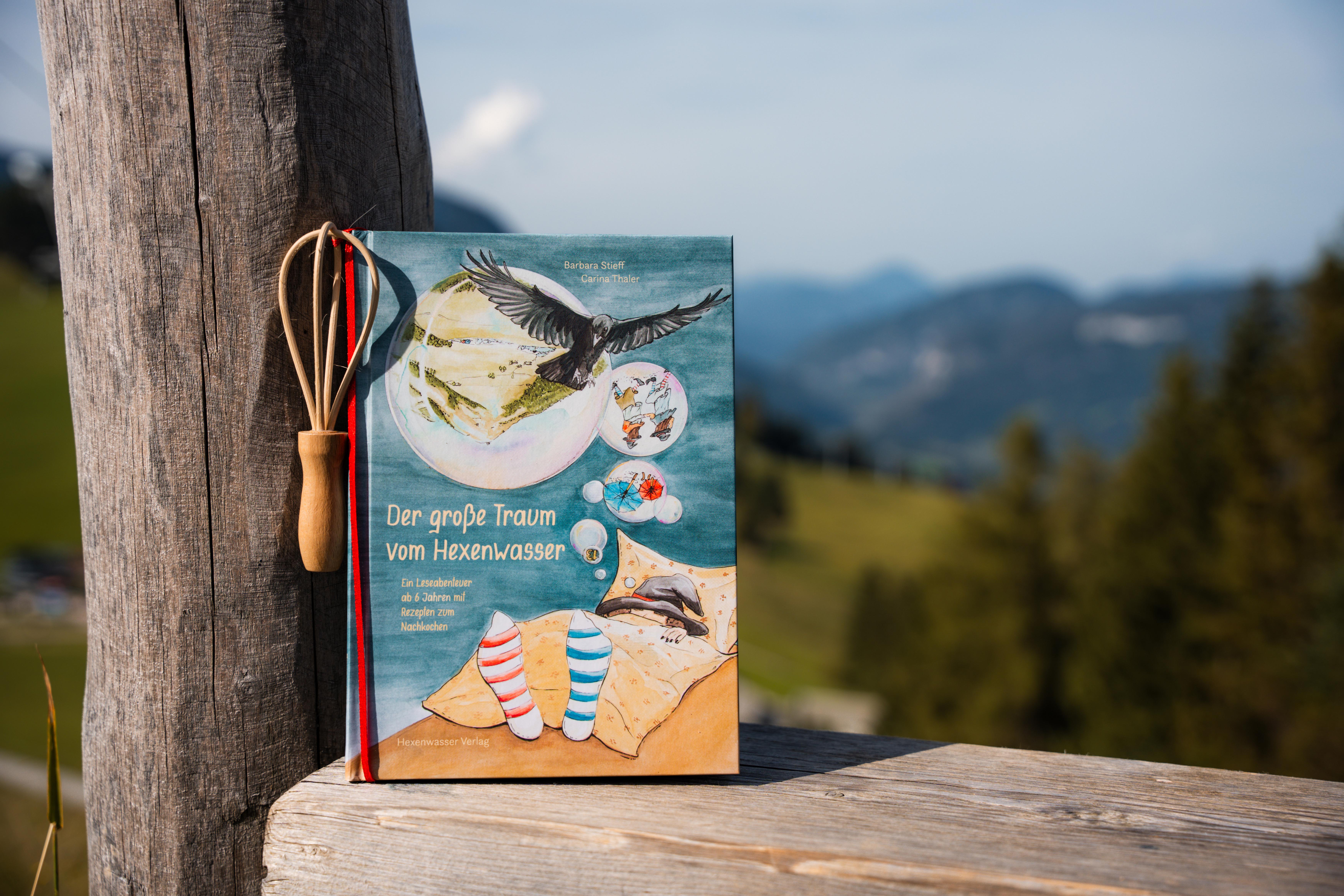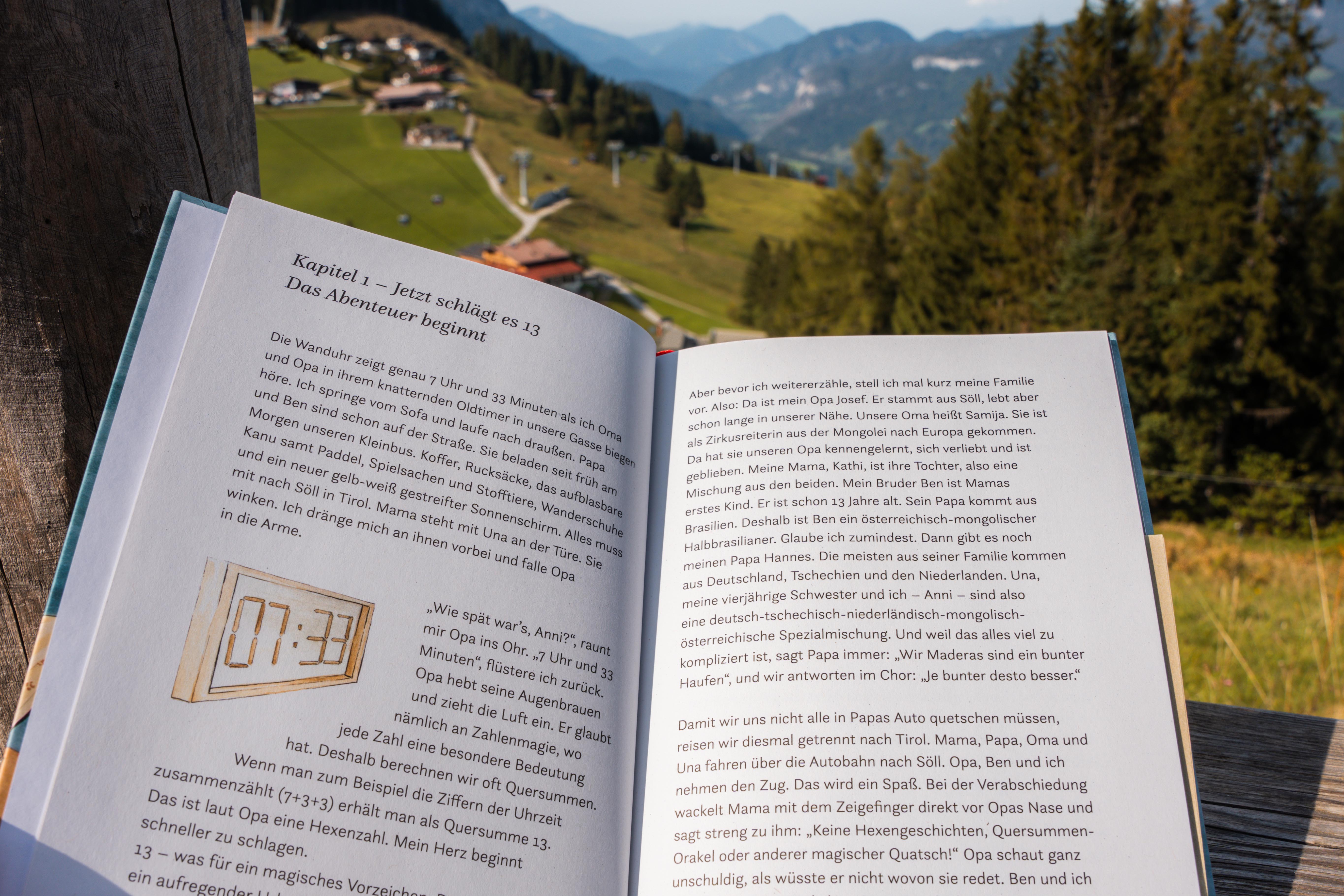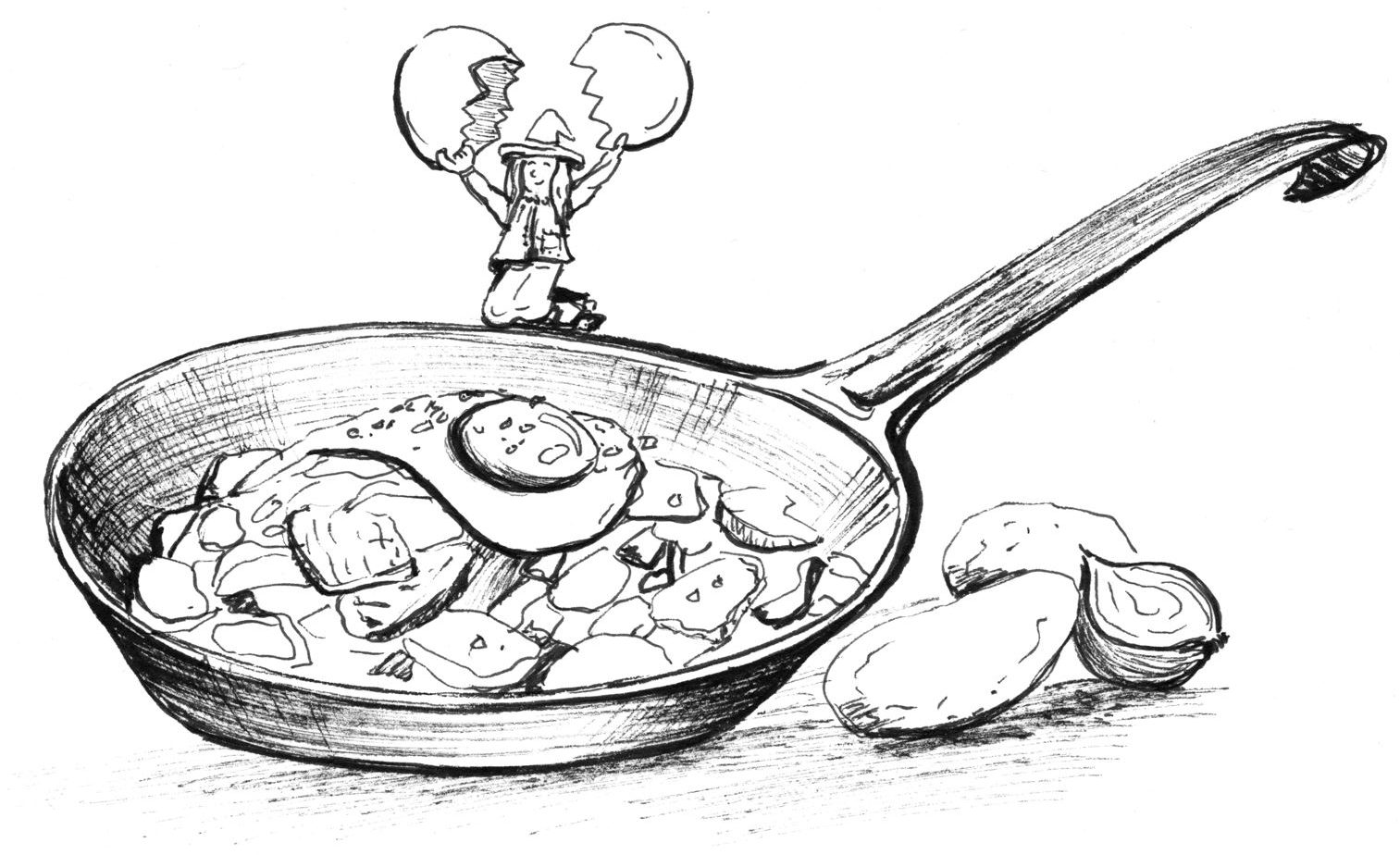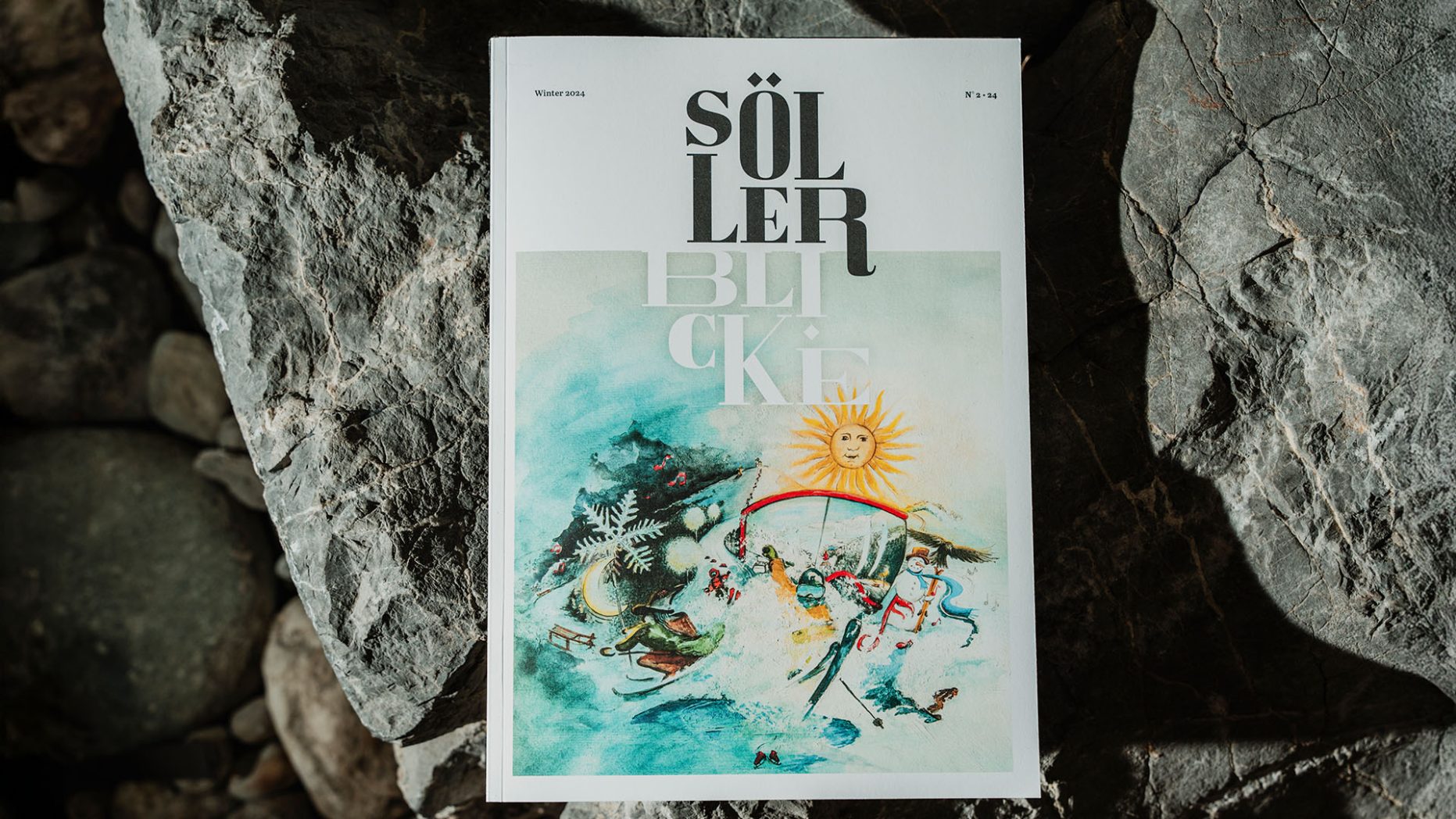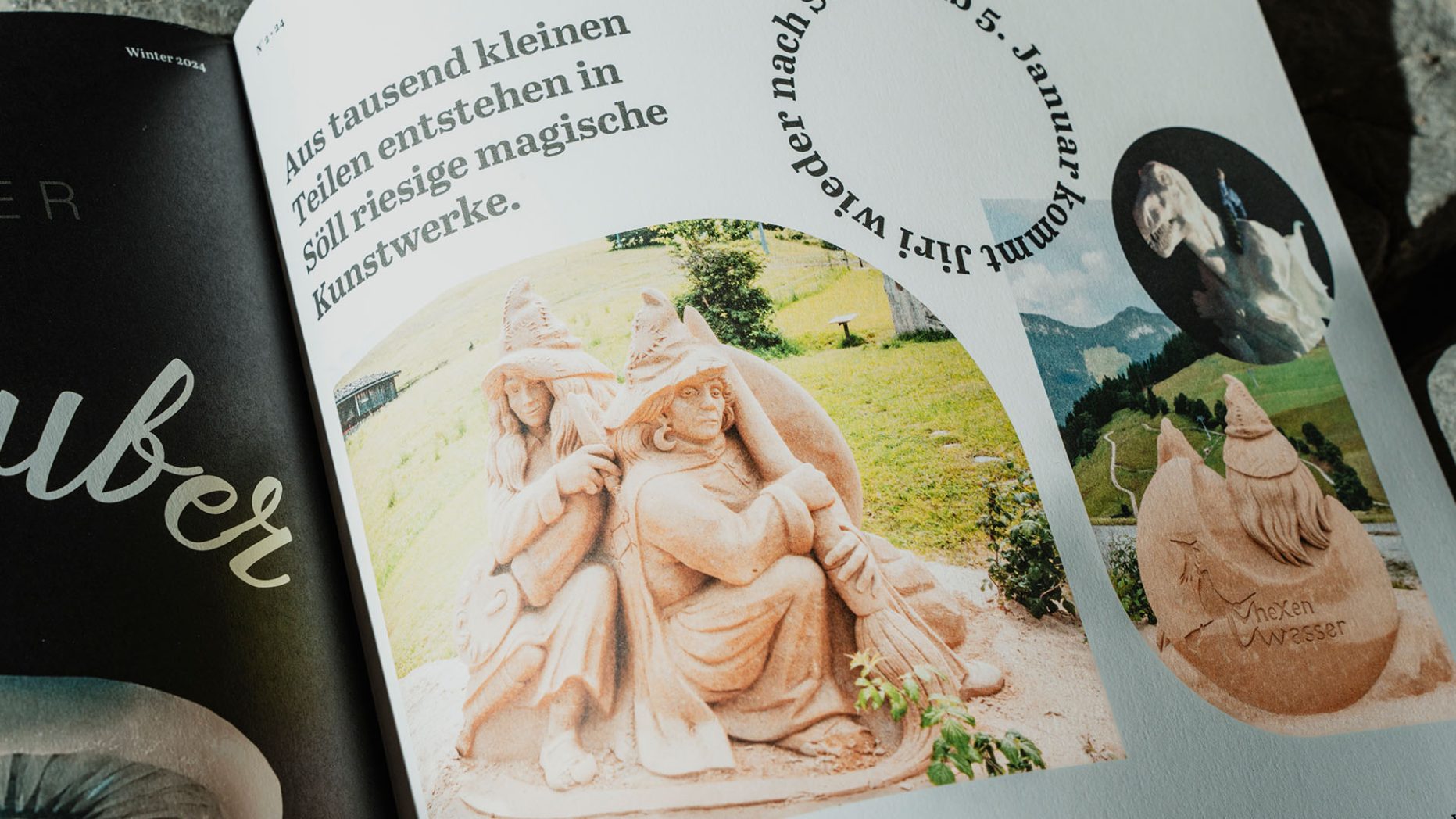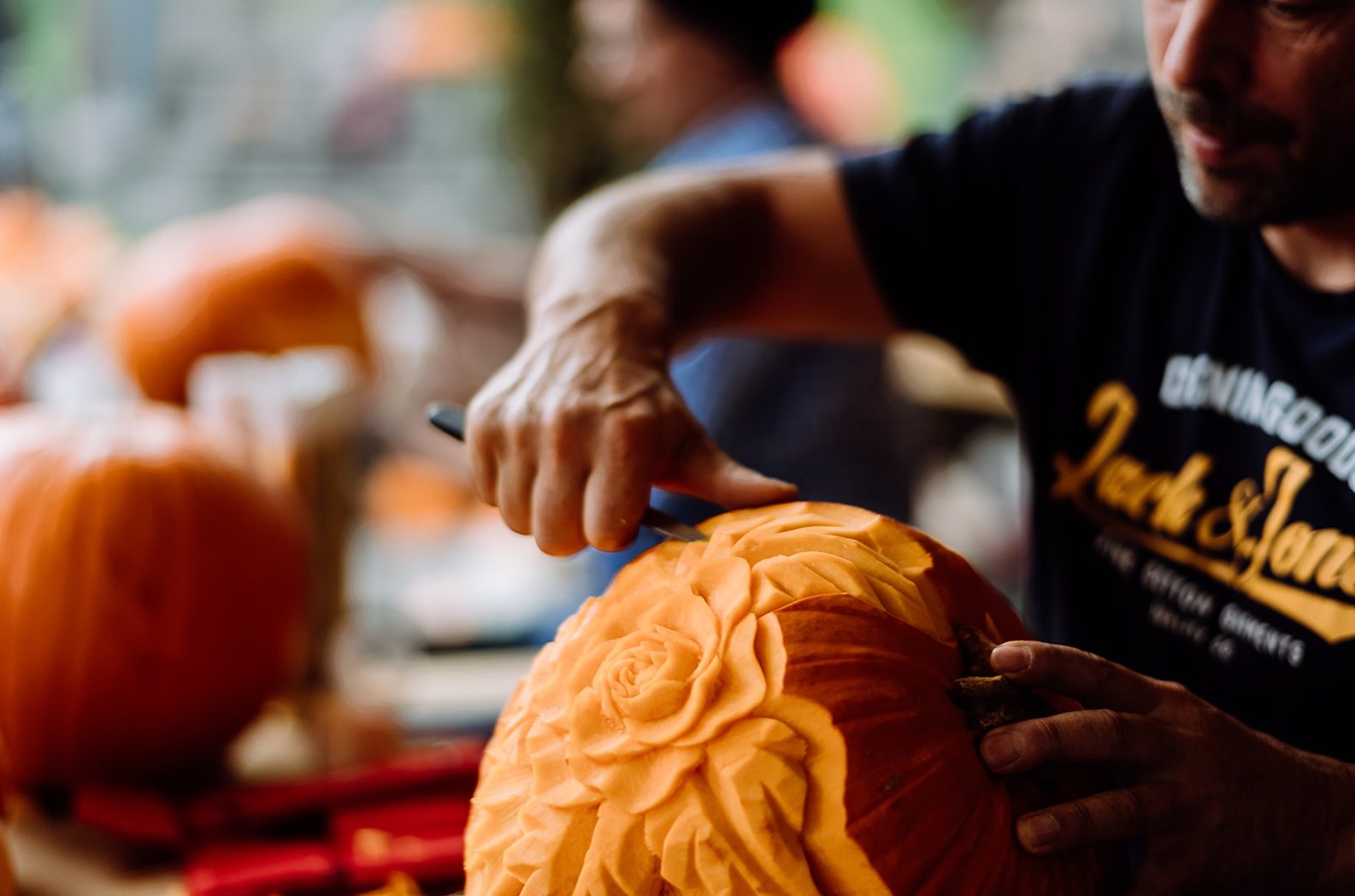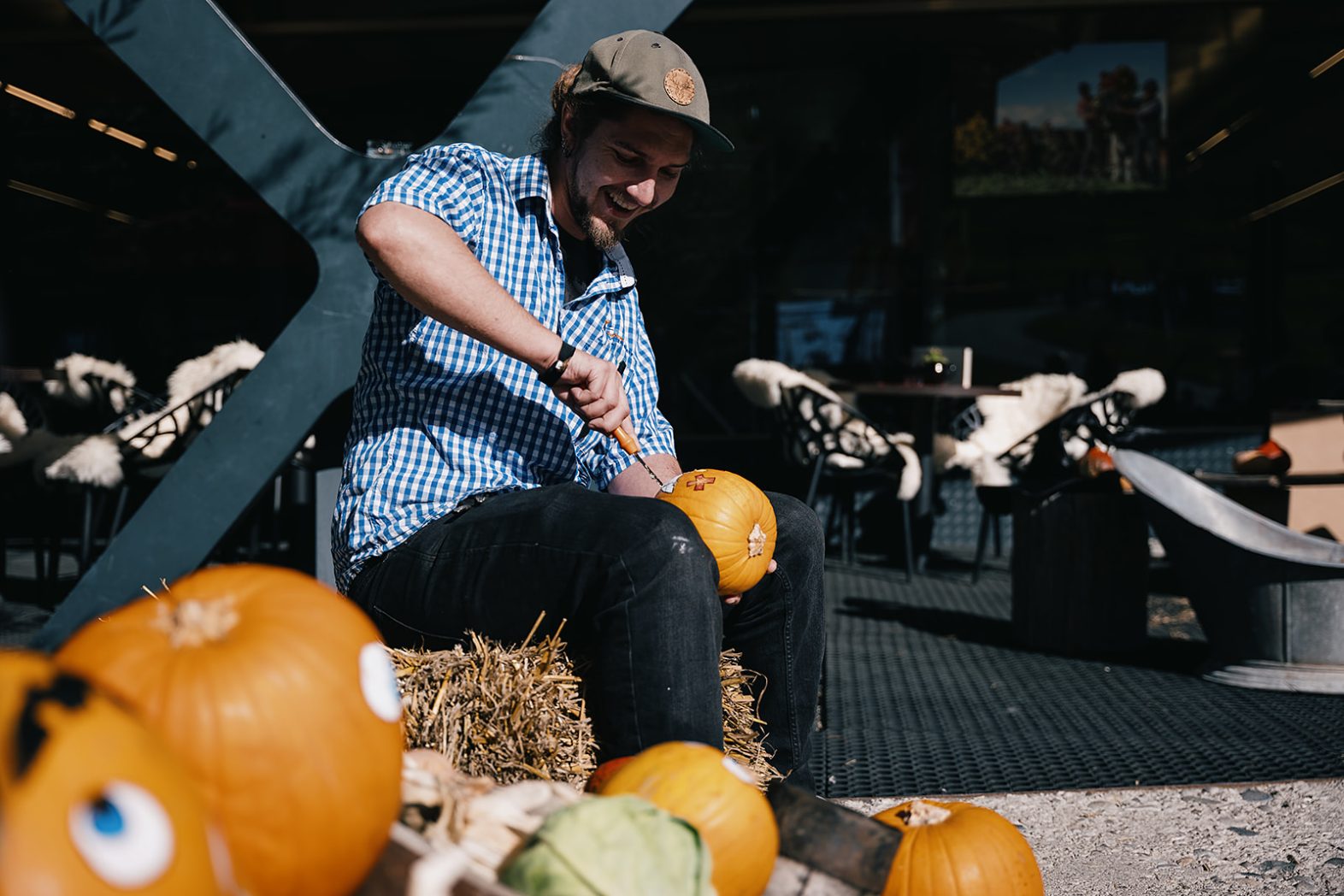A R T has many faces. One of them belongs to Dominique Rebourgeon.
Dominique Rebourgeon
Dominique can be a male or female first name, but it can also be a surname. Versatile, just like his name, is the artist Dominique Rebourgeon. Painter, set designer, actor, pianist, organist, martial artist, and more—he is all of these, but above all, Dominique is an impressive personality with passion and sharp intellect.
The meaning of his name, Dominique—”belonging to the Lord” or “the Lord’s dog”—applies to him in a certain way, as he reveals in our conversation.
For almost a month, he has been continuously drawing and painting at Hexenwasser, primarily in the new experience barn, the “AmVieh” Theater on the Stöcklalm. But even in the past months, he has been working on the theme of witches. In a pleasant chat at his workplace in the barn, he tells us who he is and how he came to Hexenwasser.
When you meet Dominique, you automatically slow down. His presence and his charming French dialect create a sense of calm. He radiates incredible tranquility and consistency. In sharp contrast to his serene aura, however, he sometimes works at breathtaking speed. After admiring the artistically designed walls, doors, and windowpanes of the new “AmVieh” Theater on the Stöcklalm together, I ask Dominique who he is.
Dominique, can you tell us in a few sentences where you come from and what shaped you into the person you are today?
After a brief moment of reflection, Dominique begins to speak calmly and thoughtfully:
*”I left home early—I was just 14 years old. My family was very poor, my dialect was terrible, and I knew that I wouldn’t find happiness in my small provincial village in France. Armed with a portfolio, I set out and applied to the Academy of Fine Arts in Maçon. I was accepted and studied there for the first two years before transferring to Bourges, where I completed an eight-year course in just four years. At 18, I had my diploma and was a trained art teacher, but I was too young to teach.
Music became a pillar of my youth. At 17, I took professional music lessons in Paris, paying for them by drawing portraits on the streets. Three portraits earned me one music lesson.
Later, I moved to Germany. I didn’t speak a word of German and never looked into a textbook—I learned the language through people. In Essen, I studied church music and composition and wrote organ works. This even led me to perform as a concert organist in St. Peter’s Basilica in Rome.
Martial arts always played a major role in my life. At times, training felt like an addiction. I co-founded one of the first Taekwondo schools in Germany.
Meanwhile, I was designing stage sets for theaters in Lyon and Paris, working for the State Theater in Kassel, and later spending 25 years at the Theater in Konstanz. Throughout my career, I have always been independent, self-employed, and a freelance artist.”*
You work on incredibly diverse projects. What type of art do you love the most?
“Every project is valuable to me. What matters is that the project aligns with my values. I make compromises, but never bad ones. If I commit to something, I must believe in it. My art is mystical, hidden, and almost always revolves around people.”
How did you come to Hexenwasser?
*”During my time in Konstanz, I met Matthias Schenk (the visionary behind Hexenwasser, who was then a student of Total Theater). Or rather, he met me. We instantly connected and brought extraordinary light and art projects to life together, forming a long-lasting creative partnership.
Our paths kept crossing, and I even contributed to the founding of his ‘Circus of the Senses’ on the shores of Lake Constance. Most recently, I worked at Schloss Freudenberg on images and panels for the theme of birthdays. He once asked if I wanted to join his team permanently, but I declined. I may be a team player, but not within a rigid structure—I need my independence.
Still, we stayed in touch. One day, he told me about Hexenwasser and invited me to meet the founders. That’s how our collaboration began. When we started discussing cows, Matthias said to me: ‘You have to paint pictures the way cows would, if they could paint.’ That was a beautiful challenge.”*
What do you like about Hexenwasser?
*”Hexenwasser is not a typical tourist attraction. Here, people experience and understand culture, and their senses are stimulated. There’s a strong sense of responsibility for what is created, and I admire that.
Parents today often don’t have time to tell their children stories. In Hexenwasser, stories are told—not made-up fairy tales, but real ones. Just like at the ‘Blaues Wunder’—that’s not fiction; it’s the truth. I appreciate that. It speaks to me.”*
You spent a whole month with us, artistically shaping the new “AmVieh Theater” with great attention to detail. How did you experience your work in the Stöcklalm barn?
*”The artistic design of the barn was one of my longest projects ever. The collaboration with the Ager family from Stöcklalm and the Hexenwasser team worked very well. But mostly, I worked with the cows. That was both fascinating and wonderful.
The barn exudes peace and tranquility. The sounds of the cows were soothing, almost meditative. There was one cow in particular that fascinated me—every day, as she chewed her cud, she rang her bell in a very specific rhythm. Like in a temple. All the other cows remained silent during this ritual. It was clear—this cow loved her own personal song. It was beautiful.
Normally, I don’t listen to music or engage in conversations while working. I focus for three hours at a time, then take a break. On good days, I can do two more three-hour blocks after that.”*
Had you worked with cows before?
*”As a child, I spent a lot of time in the barn. There was an old, lonely man in my village—I used to get milk from him and help him on the field. He had only one cow, but he was always busy and a great storyteller.
He worked almost non-stop, and everything he did had purpose. But every afternoon at five, he took a break. He would sit in front of his big clock, wait for it to strike five, and say: ‘It’s five… and almost six.’ Because at six, work resumed. It was as if he couldn’t wait. That has always stayed with me. This man lived for his fields and his cow.”*
One last personal question: You and your wife live in a former monastery. Are you religious?
*”Yes, we live in an old monastery building. The church, with its beautiful organ, dates back to the 13th century, and every era has added to its structure. It has a very pleasant atmosphere. Unfortunately, I’m not allowed to play the organ anymore because I left the Catholic Church years ago.
That had nothing to do with my Zen Buddhist upbringing but with an incident where I disagreed with how a close friend was treated.
Am I religious? I firmly believe in something greater.”*
Thank you, Dominique, for these honest and profound insights into your life. You are a tremendous asset to Hexenwasser.

